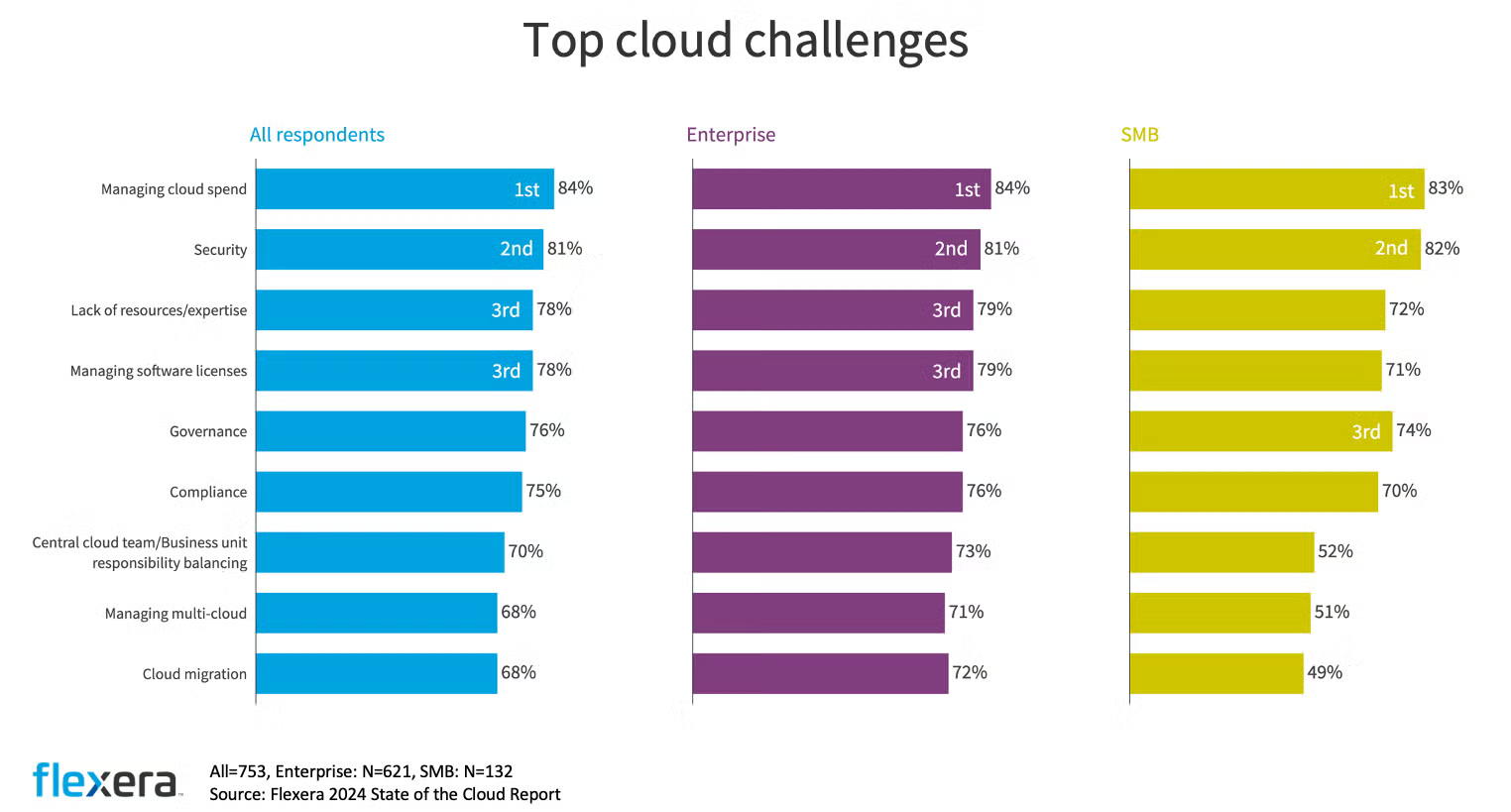The Hidden Costs of Cloud Computing: How to Avoid Overspending
Cloud computing has become an essential pillar for businesses looking to scale operations, improve efficiency, and leverage cutting-edge technologies. While cloud adoption continues to rise, with global cloud spending expected to reach $947.3 billion by 2026, many companies struggle with unexpected expenses that significantly inflate their IT budgets.

A 2024 Flexera Cloud Report found that 84% of enterprises consider managing cloud spending a top challenge. This raises a critical question: What are the hidden costs of cloud computing, and how can companies control them?

Common Hidden Costs in Cloud Computing
1. Overprovisioning of Resources
One of the most common pitfalls in cloud cost management is over-provisioning—allocating more resources than necessary. Many organizations pay for unused capacity because they fail to regularly assess their actual needs.
According to a State of Cloud Usage Optimization 2024 by Stacklet when surveying more than 300 respondents:
🔹 51% estimate that over 40% of their cloud spend is wasted.
🔹 93% report at least 10% of cloud spending as waste, representing billions in loss.
💡 Solution: Use rightsizing tools to match cloud resources to actual workloads. Platforms like AWS, Google Cloud, and DigitalOcean offer cost-efficient, scalable solutions that help businesses rightsize resources without overpaying.
2. Data Transfer and Egress Fees
Moving data within the cloud or across cloud providers incurs hidden costs, especially when large volumes of data are transferred frequently.
🔹 Egress fees from everyday data movement can amount to 10-15% of customer cloud bills
🔹 In multi-cloud environments, costs rise significantly because of inter-cloud data transfers.
💡 Solution: Minimize unnecessary data transfers, consolidate workloads within a single cloud provider when possible, and use caching and CDNs (Content Delivery Networks) to reduce bandwidth usage. DigitalOcean provides competitive pricing with predictable bandwidth costs, making it a strong option for businesses looking to optimize expenses.
3. Underutilized or Idle Resources
Many companies deploy cloud instances but fail to decommission them when no longer needed, leading to payments for unused storage, computing power, and virtual machines (VMs).
🔹A 2022 survey by StormForge revealed that nearly 50% of cloud resources paid for by enterprises are wasted due to being unused or idle.
🔹Similarly, the 2024 HashiCorp State of Cloud Strategy Survey found that 35% of organizations identified idle or underused resources as a significant contributor to cloud waste.
This underutilization not only inflates costs but also reduces operational efficiency.
💡 Solution: Implement automated resource management with scheduling tools that shut down idle workloads during off-peak hours. Platforms like AWS, Google Cloud, and DigitalOcean offer monitoring tools to help identify and manage underutilized resources effectively.
4. Complex Pricing Models and Unexpected Charges
Cloud pricing models are often complicated and dynamic, making it difficult to predict exact costs. Hidden fees arise from:
✔ Licensing Costs: Some software solutions deployed in the cloud require separate licensing fees.
✔ APIs & Third-Party Services: Integrating with external APIs and SaaS solutions adds additional costs.
✔ Reserved vs. On-Demand Pricing: Without proper cost forecasting, businesses end up paying higher rates for on-demand services instead of saving with reserved pricing models.
💡 Solution: Conduct regular cloud bill audits, leverage cost forecasting tools, and negotiate long-term contracts to secure better pricing.
5. Unmanaged Data Storage Costs
Companies often store large volumes of data without optimization, leading to skyrocketing storage fees.
🔹 A study by Seagate Technology found that 68% of enterprise data goes unused, indicating that a significant portion of stored data may be unnecessary.
🔹 Cold storage solutions (such as AWS Glacier) can be 75% cheaper than hot storage for archived data.
💡 Solution: Implement data lifecycle policies to ensure frequent deletion of unnecessary files and use tiered storage solutions that automatically move less-accessed data to cheaper storage options.
5. Unmanaged Data Storage Costs
🔹 A study by Seagate Technology found that 68% of enterprise data goes unused, indicating that a significant portion of stored data may be unnecessary.
🔹 Implementing data lifecycle policies can lead to substantial savings. For instance, transitioning data to more cost-effective storage tiers as it ages can reduce storage costs significantly.
Solution: Implement automated data lifecycle policies to transition infrequently accessed data to lower-cost storage tiers. Regularly auditing stored data to eliminate redundancies and unnecessary files can further optimize storage costs.
Smarter Cloud Spending Starts Today with Madison Technologies
Cloud computing transforms businesses, but unchecked costs can erode its benefits. By right-sizing resources, monitoring spending, and optimizing storage, companies can fully leverage cloud technology without unnecessary expenses.
At Madison Technologies, we help businesses navigate cloud complexities with tailored solutions for PropTech and FinTech. Our expertise in Super App development, Cloud Computing, Security, and Outsourcing ensures that you stay ahead while keeping costs under control.
#number1_superapp #security_for_malaysia #cloud_computing_for_malaysia #fintech_development_for_malaysia #outsourcing4malaysia #proptech_development_for_malaysia #dedicated_team_for_malaysia #CloudCostOptimization #CloudSavings #FintechCloudSolutions #CloudCostSavings #CloudBudgeting
Let’s make your cloud investment efficient, secure, and future-proof. Contact us today! |






